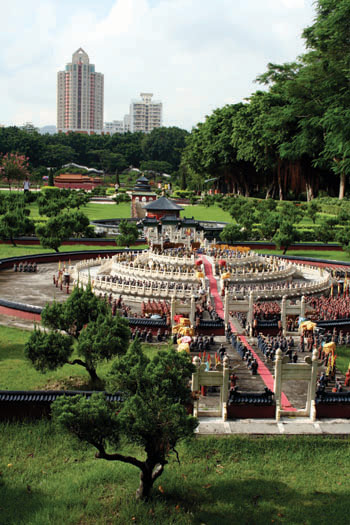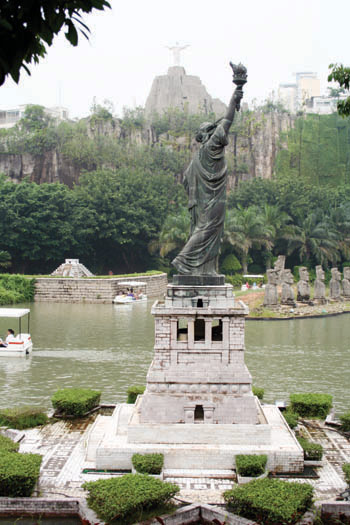OF THEME PARKS, THE SELF, AND SHENZHEN
| October 3, 2010 | Post In LEAP 5
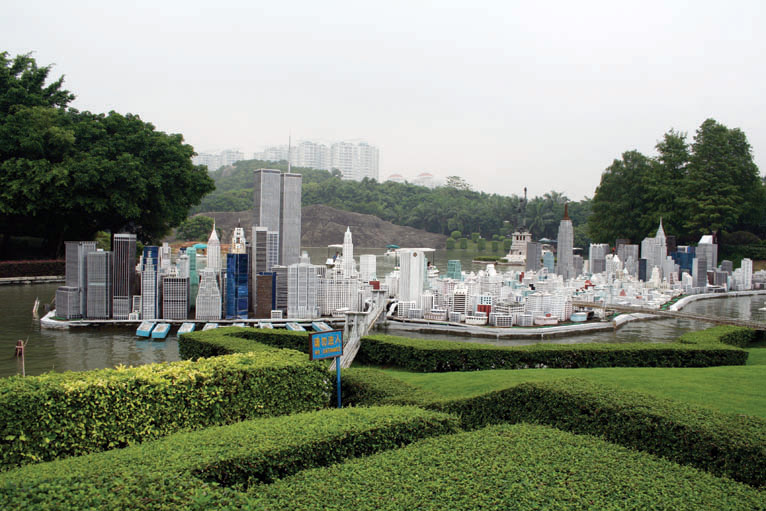
The self is fraught these days, but particularly so in Shenzhen, a city with no history—or only thirty years of it, as the saying goes. It is a concrete sprawl of flash developments and relaxed economic regulations, brimming with migrants who pass through loose borders looking for fast money. Every one of Shenzhen’s nearly nine million inhabitants comes from someplace, yet for most of them, that place is not Shenzhen itself but rather a home elsewhere that is less tangible, sustained more in the abstract.
It is no coincidence that Shenzhen is also the undisputed theme park capital of China. In one city, there is Windows of the World, probably the most well-known of all the city’s theme parks, where one goes to see the Eiffel Tower, Taj Mahal, pyramids of Giza, and so on, in miniature. There is Splendid China, the whole of scenic China condensed into one park; China Folk Culture Village, which showcases the country’s ethnic minorities; Minsk World, a disused Russian aircraft carrier that now hosts a military theme park; the Longgan Dragon Park; and Happy Valley, an amusement park that offers some of the city’s more straightforward attractions.
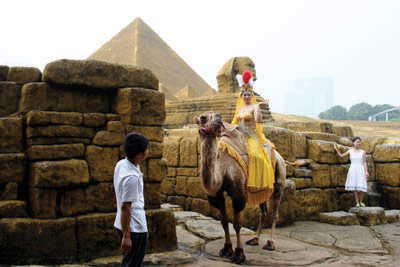
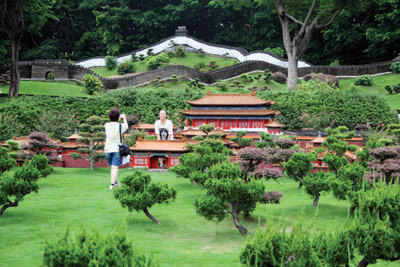
I spent some time in these parks over the course of repeat visits to Shenzhen in 2009. My most striking memory of these trips is perhaps one of the most common: watching a visitor to a park pay a few kuai in order to put on a cheap costume in the style of an ethnic or cultural other, smiling for a picture in this borrowed clothing. Putting the specific racial implications of these specific episodes aside, wearing the costume of a foreigner does not highlight what is foreign—it is a way of highlighting the self. These pictures say, “Look at me, I’m dressed as if I were an other.” And this is entertaining precisely because one is not other at all.
Similarly, theme parks like Windows of the World are obsessed with spectacles in miniature. Monuments like the White House, Angkor Wat, the Kremlin—the authentic versions of which take their form from specific functions—are stripped of these contexts and reduced to icons, caricatures even, as small as they can possibly be before ceasing to serve as spectacles. What these parks excel at providing are endless streams of photo opportunities, and what is most salient in these photographs is not the monument but the presence of the self: a picture of me in front of Potala Palace, a picture of me in front of the Great Wall, a picture of me in front of an ethnic minority village. The monuments may change but I always foreground them.
Only in places like Shenzhen, where there is no sense of a coherent heritage, or Orlando, Florida, where the autochthonous has been so completely supplanted by the ideologies of invasive capital, is such a visible part of lifestyle structured around activities that serve to confirm the self. And the parks exist in such manic quantities that the trend even has a name, gongyuankuang, the “theme park craze.”
Windows of the World advertises the ability to travel the entire world in just one day, and even sells pretend passports to the same effect. But in truth, nobody goes expecting to leave Shenzhen. The park offers no seamless fantasy, no convincing sense of escape. Targeted at a domestic audience, the outside city crowds in on the park, nondescript skyscrapers outside the park limits interspersed in the view from within the park as much as the fake monuments themselves. And the simulacrum is far from convincing: beyond their dwarfish size, rapidly degrading veneers betray the materials they conceal, and workers perform maintenance in plain sight of visitors.
The experience of being a tourist is essential to these parks: one purchases entrance to the park, just as plane tickets, for example, serve as the price of admission to other countries. Once inside, the scenic is consumed. If tourism is understood as a misplaced search for authenticity, then it is also metaphor for the experience of modernity, “a ritualized encounter with modernity itself” (anthropologist Tim Oakes), an on-going effort to construct a sense of identity, a practice in creating modern subjectivities.
Who, then, is the self that is constructed in the theme parks of Shenzhen? It is a self that has all but forgotten its socialist past, instead taking “timeless” Confucian heritage as its origin myth. It is a self that acts out ideologies of national unity, like the “nationalities karaoke” that is performed at the China Folk Culture Village. It is a coherent “nationscape,” like at Splendid China, one that reduces the complexities of reality into essentialist symbols benefitting the ruling systems of power. It is a “multinational vision of modern China” that speaks more of ambitions than reality. It is a self that hopes to be modern, a self that uses theme parks as training wheels for a modernity both already realized and infinitely deferred.
